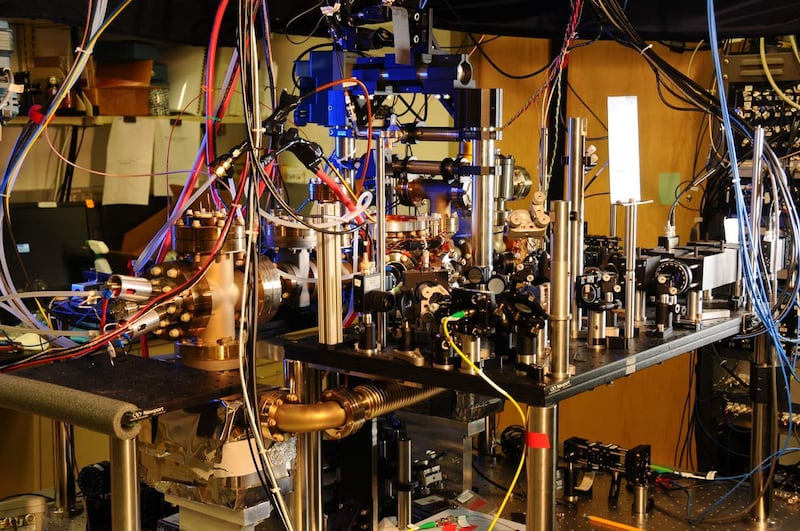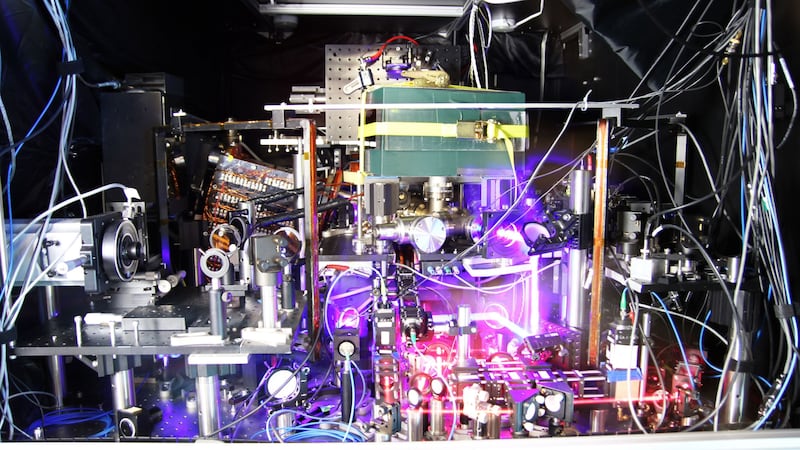A pair of atomic clocks have set “unprecedented” performance records for stability and precision, new research has revealed.
Researchers say the record-breaking results could help improve timekeeping and navigation.
Physicists at the National Institute of Standards and Technology (NIST) in the US said the two clocks will also assist research into gravity, the early universe and even dark matter.
The experimental devices each trap a thousand atoms of the chemical element ytterbium in grids made of laser beams.
Inside these optical lattices the atoms are said to “tick” by vibrating between two energy levels.
In research published in the journal Nature, NIST physicists compared the two independent clocks and achieved record performances in the areas of systematic uncertainty, stability and reproducibility.
Systematic uncertainty measures how well a clock represents natural vibrations, or frequency, of the atoms.
Researchers found each clock matched the natural frequency within a margin of error of just one billionth of a billionth.
The clock’s stability, the amount the frequency varied over a day, was also recorded at a minuscule level.
The reproducibility of results, how closely the two clocks ticked at the same frequency, again showed a difference of less than one billionth of a billionth.
“Systematic uncertainty, stability, and reproducibility can be considered the ‘royal flush’ of performance for these clocks,” project leader Andrew Ludlow said.
“The agreement of the two clocks at this unprecedented level, which we call reproducibility, is perhaps the single most important result, because it essentially requires and substantiates the other two results.”
Mr Ludlow said the clocks’ total error dropped below scientists’ ability to account for gravity’s affect on time.
“We envision clocks like these being used around the country or world, their relative performance would be, for the first time, limited by Earth’s gravitational effects,” he said.
According to celebrated physicist Albert Einstein’s theory of relativity, time passes more slowly in places with stronger gravity.
NIST’s super-sensitive clocks’ degrading timekeeping will therefore be able to help with the precise mapping of the gravitational distortion of space-time, researchers claim.

They also argue it will help with the detection of signals from the early universe such as the mysterious dark matter.
The ytterbium clocks could also improve the ability to measure the shape of the Earth based on surveys of sea levels.
Devices placed on different continents could resolve geodetic measurements to within one centimetre.
The ytterbium atom is among potential candidates for the future redefinition of the second, the international unit of time, in terms of optical frequencies.
NIST’s new clock records show a 100-fold improvement in accuracy over clocks based on the current standard, the cesium atom, which vibrates at lower microwave frequencies.
Researchers are now building a portable ytterbium lattice clock that could be transported to other labs around the world for clock comparisons.








